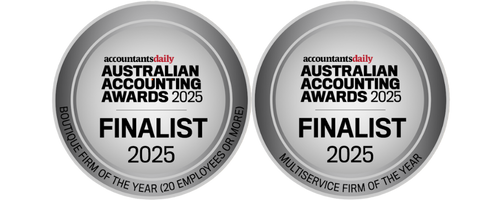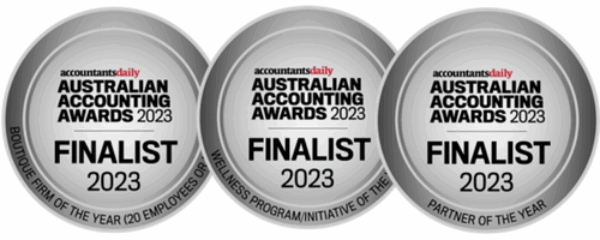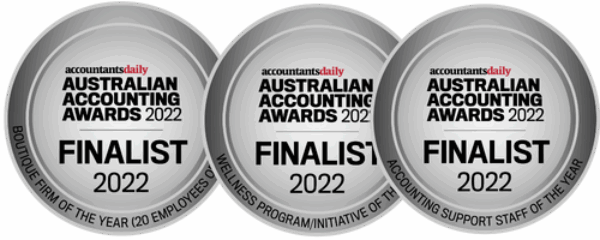Taxation changes under the current government will be minimal in the immediate future, their focus is on getting the budget back into surplus and ensuring they can meet their more ambitious tax cutting agenda which they have scheduled to commence in 2023/24. These tax changes are some time away and things have to go their way from a budget perspective for this to be realised.
“…focus is on getting the budget back into surplus…”
Commodity prices feed into government revenue by way of profits for our big miners, this is probably the major risk to this tax cutting agenda and this is largely outside the control of the government. Big drops in iron ore or coal prices will impact the budget and the government’s agenda to further reduce income tax rates. It is comforting to note that the government forecasts do not rely on commodity prices to remain at their current levels, instead they have allowed for a decent reduction from here. However a major global shock on our two key commodities will no doubt have an impact.[/vc_column_text][/vc_column][/vc_row][vc_row type=”in_container” full_screen_row_position=”middle” scene_position=”center” text_color=”dark” text_align=”left” overlay_strength=”0.3″][vc_column column_padding=”no-extra-padding” column_padding_position=”all” background_color_opacity=”1″ background_hover_color_opacity=”1″ width=”1/2″ tablet_text_alignment=”default” phone_text_alignment=”default”][vc_column_text]Property markets
The property market will get an immediate sugar hit from the election result. Immediately following the election we saw the RBA hint very strongly at a rate cut in the near future (most economists now believe we will see somewhere between 2-3 rate cuts in the next 12 month period) and APRA (the regulatory body that regulates the banking sector) has recommended a relaxing of the current restrictive serviceability rules. This will mean a greater number of borrowers will more easily meet loan approvals and/or they will be able to borrow more. With unemployment close to 5%, interest rates at already very low levels, a relaxing of lending standards and business and consumer confidence improving off the back of the election result, it will likely follow that property markets in the major metropolitan areas will now stabilise and potentially rise from here.[/vc_column_text][/vc_column][vc_column column_padding=”no-extra-padding” column_padding_position=”all” background_color_opacity=”1″ background_hover_color_opacity=”1″ width=”1/2″ tablet_text_alignment=”default” phone_text_alignment=”default”][image_with_animation image_url=”18642″ alignment=”” animation=”None” box_shadow=”none” max_width=”100%”][/vc_column][/vc_row][vc_row type=”in_container” full_screen_row_position=”middle” scene_position=”center” text_color=”dark” text_align=”left” overlay_strength=”0.3″][vc_column column_padding=”no-extra-padding” column_padding_position=”all” background_color_opacity=”1″ background_hover_color_opacity=”1″ width=”1/1″ tablet_text_alignment=”default” phone_text_alignment=”default”][vc_column_text]Equity markets
Equity markets are currently trading at around 15-16 times price-earnings (PE). In a nutshell, this would mean that they are certainly not cheap based on historical PE averages. The Australian stock market has now reached its highest levels since 2007 and a continued upwards movement from here, with PE ratios at these levels, will depend on ASX listed companies reporting improved earnings conditions compared to what was reported earlier this year. It is highly likely our market will simply follow the movements of Wall Street in the short to medium term. If we cast our mind back to this time last year we saw a similar scenario, with markets strongly higher in the first half of the year before a major sell-off in the second. Both the Australian market and the US market are trading at reasonably high PE’s and at these levels, it would be advisable to consider the risk versus reward – i.e. how will these strong returns from the 1st half of this year be sustained into the second half? Investors would be advised to take note of some worrying factors that do not appear to be priced into markets at present, including falling US GDP data, major trade tensions between the US and China, poor GDP figures from key European economies such as Germany and stocks trading at elevated PE levels….
…..take care if you are fully invested, it could get choppy and a repeat of last years falls would not be out of the question.
If you would like to discuss anything in this article and how it relates to your situation, please contact us.[/vc_column_text][/vc_column][/vc_row]











